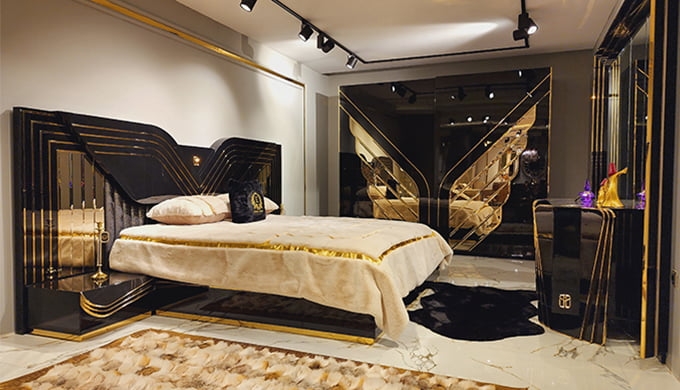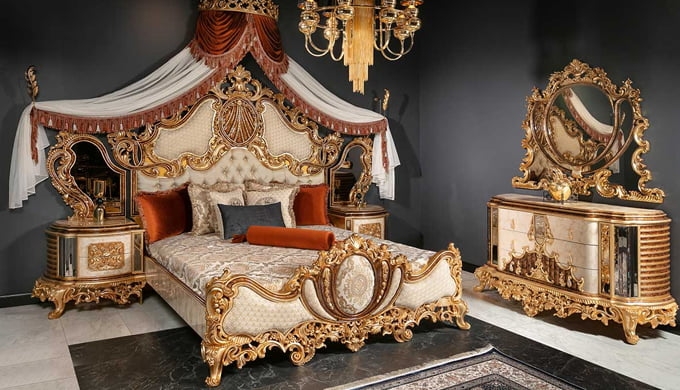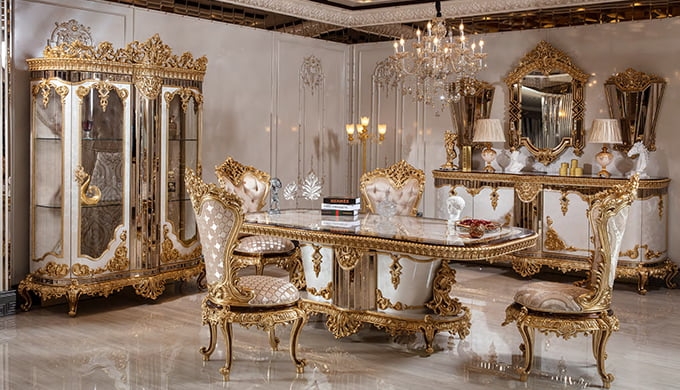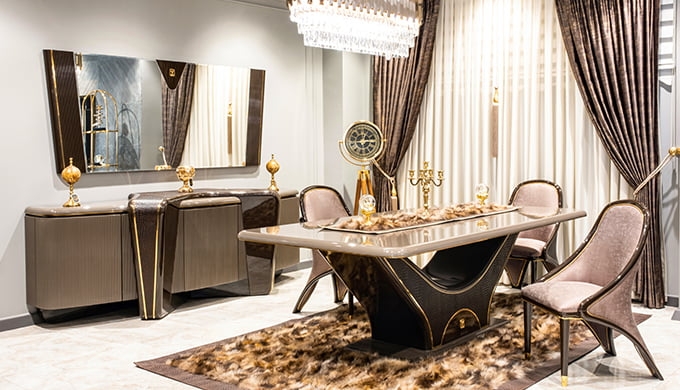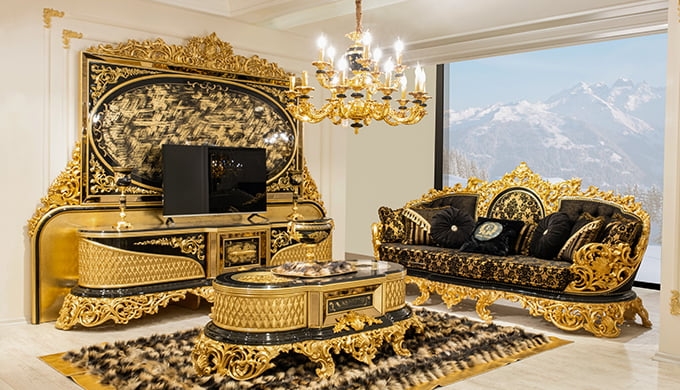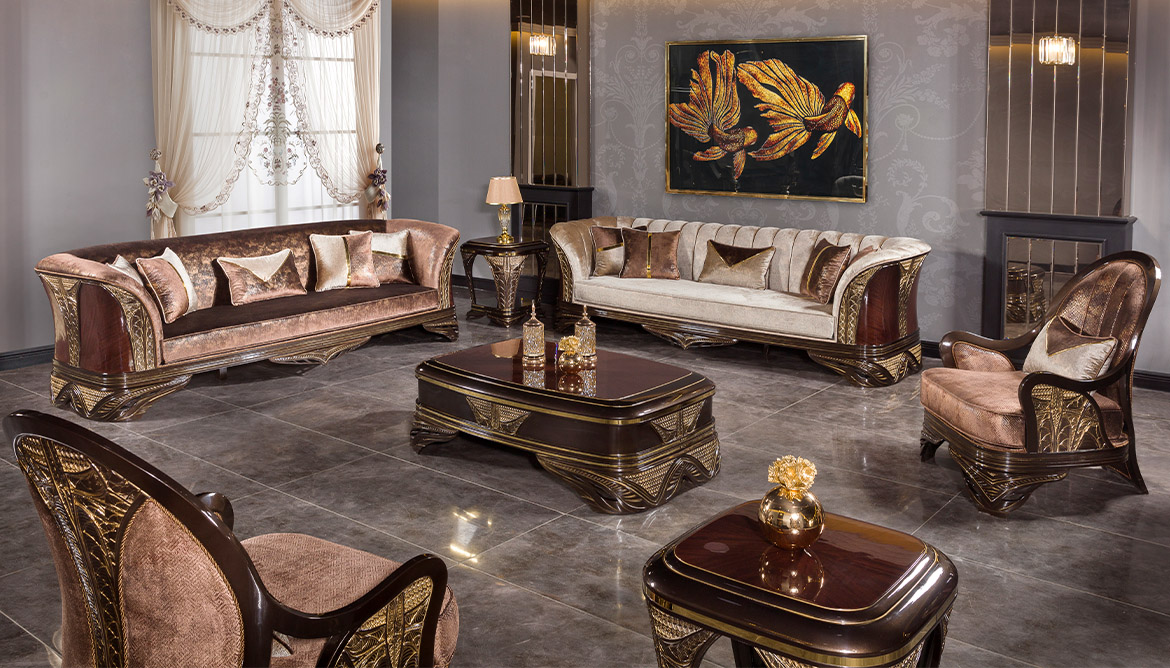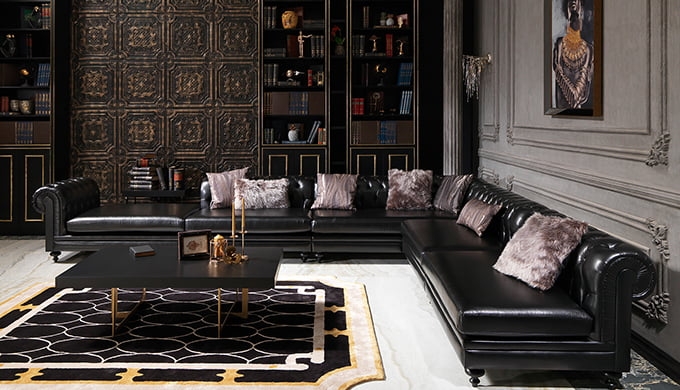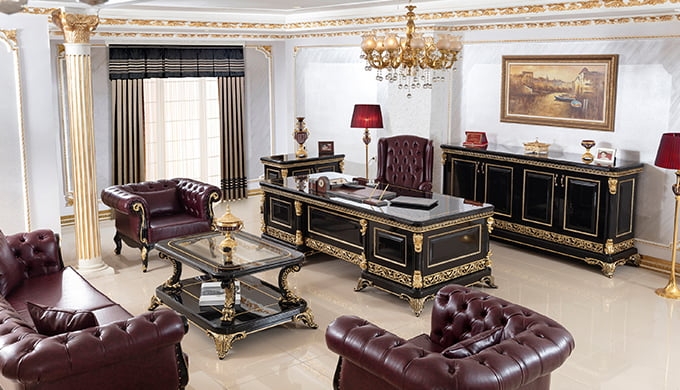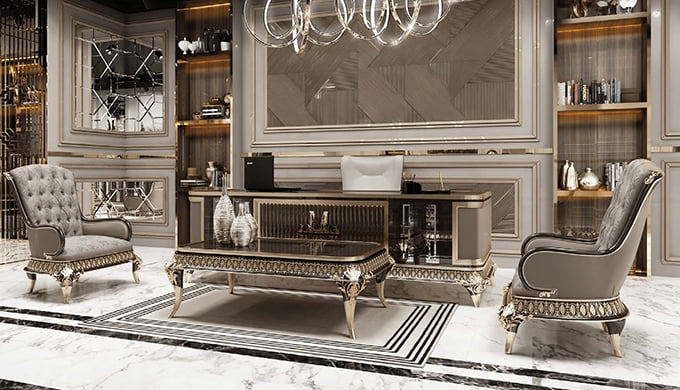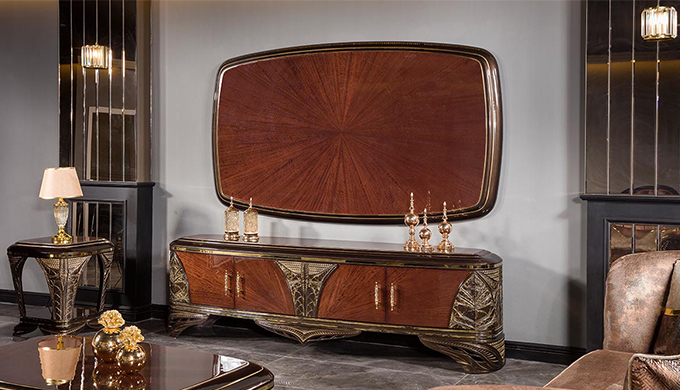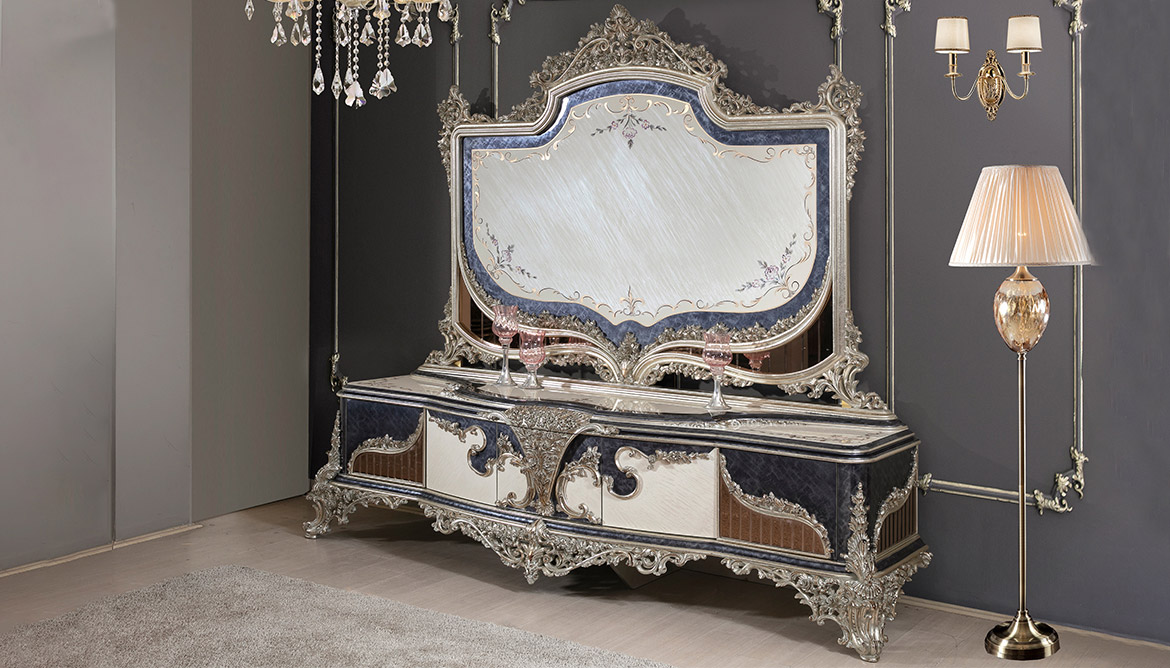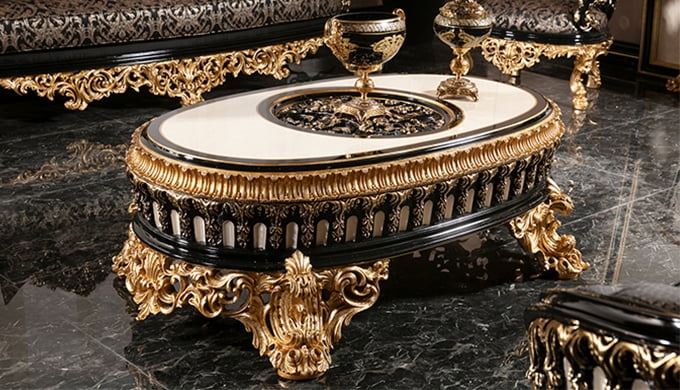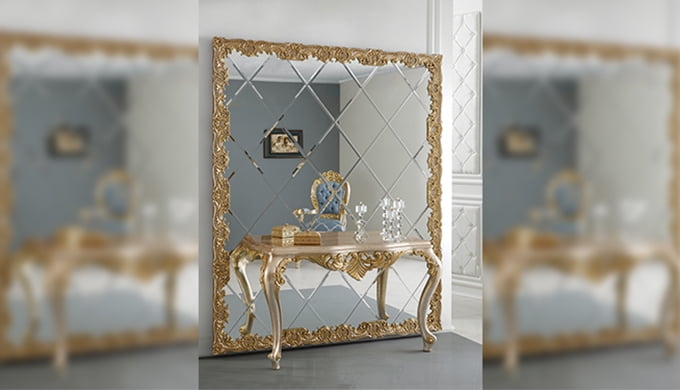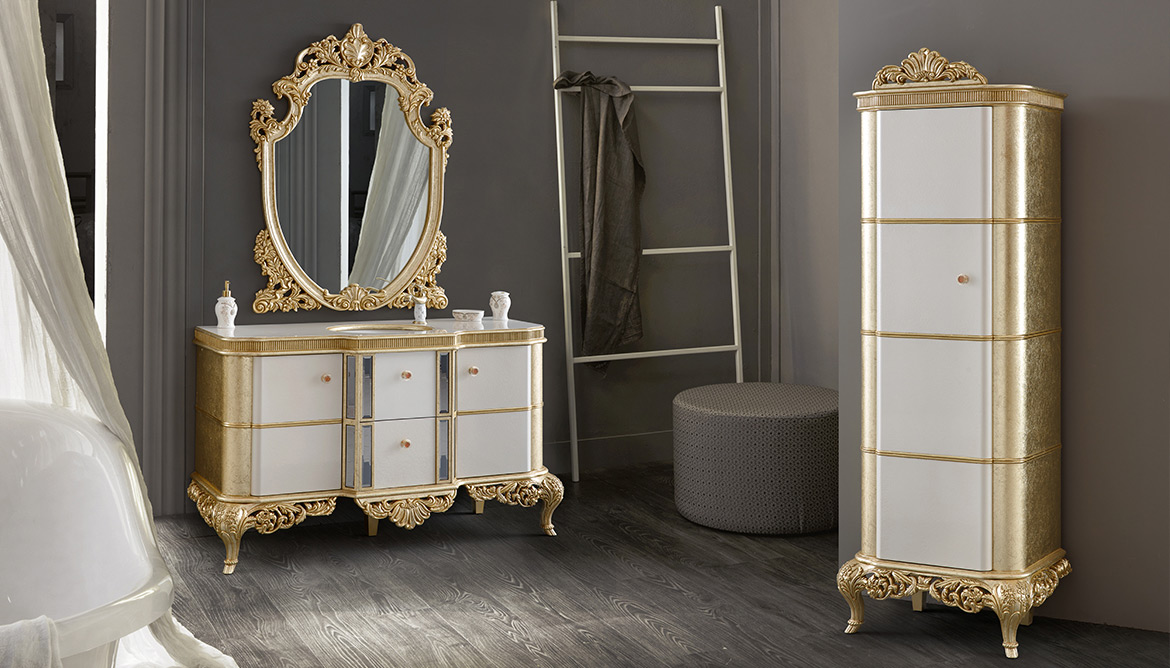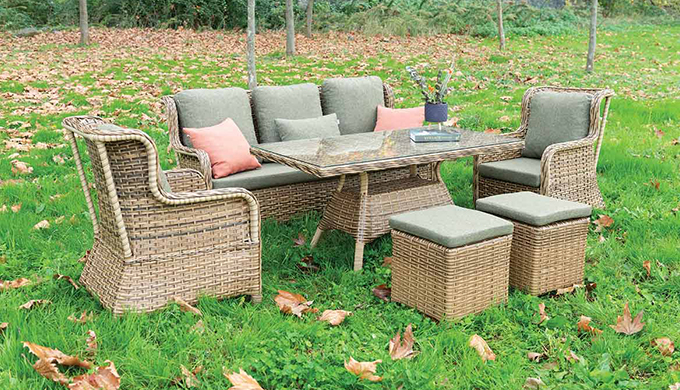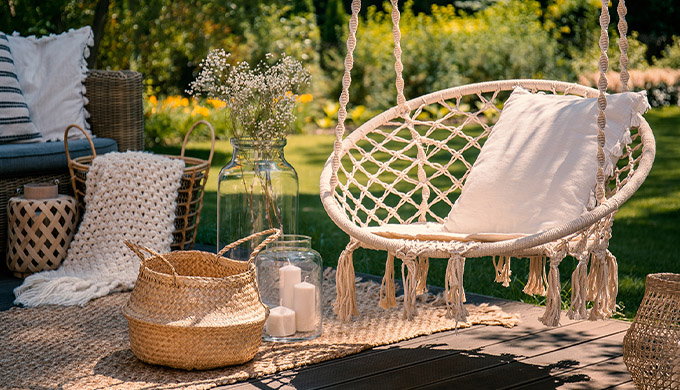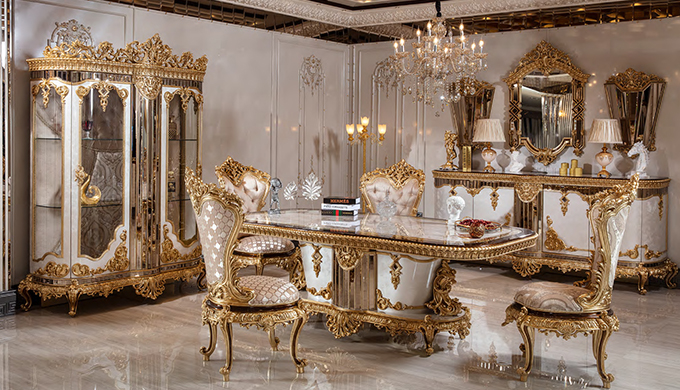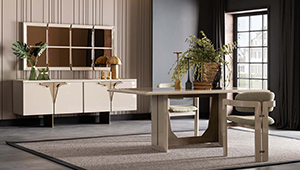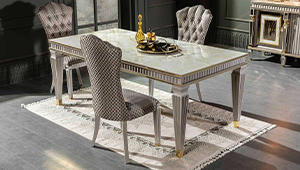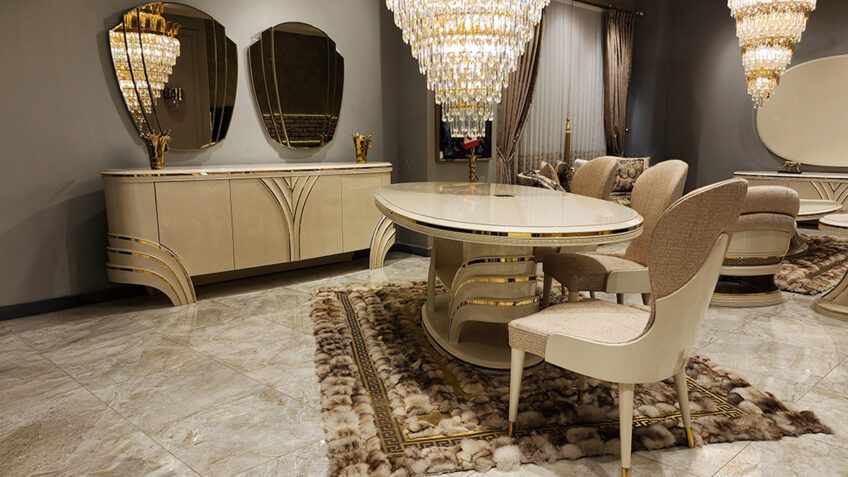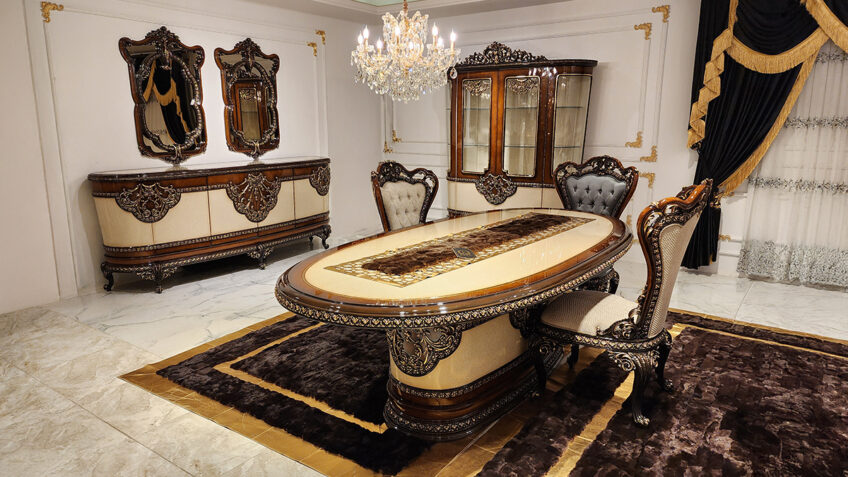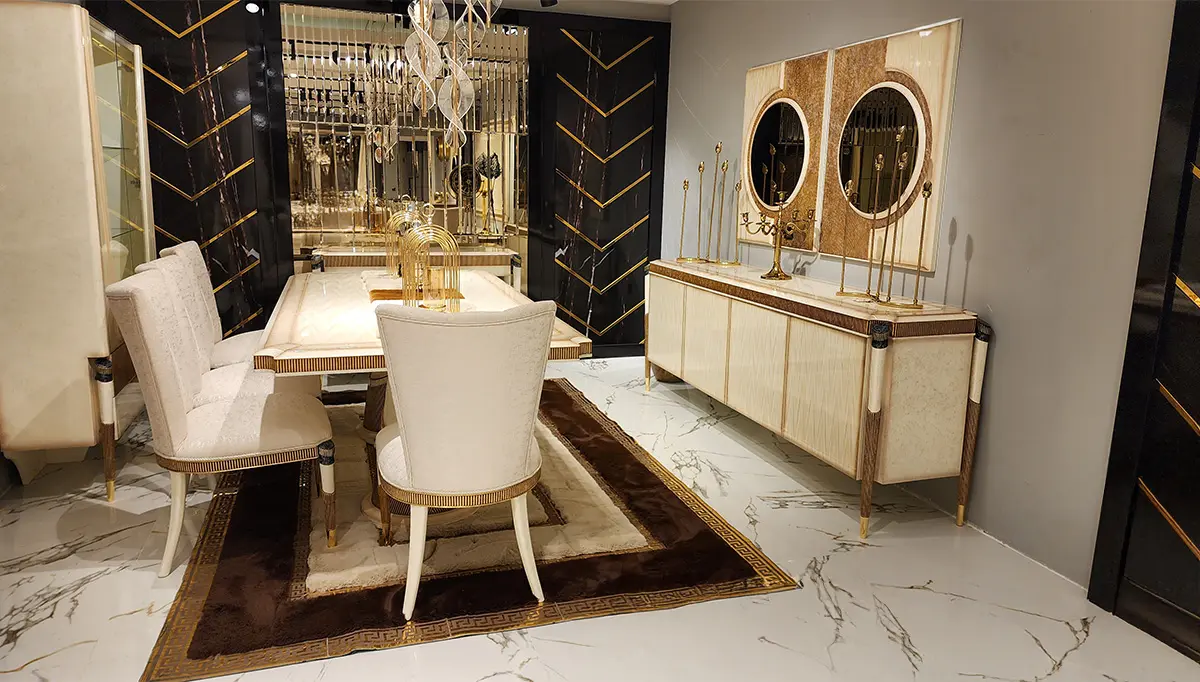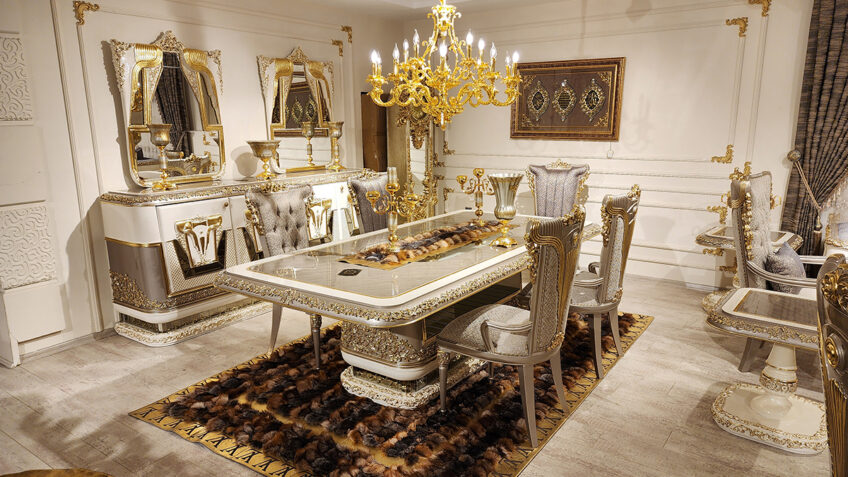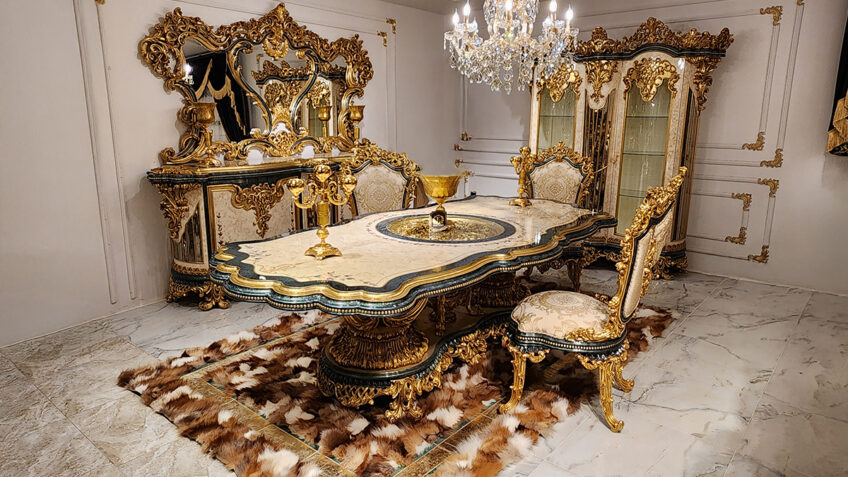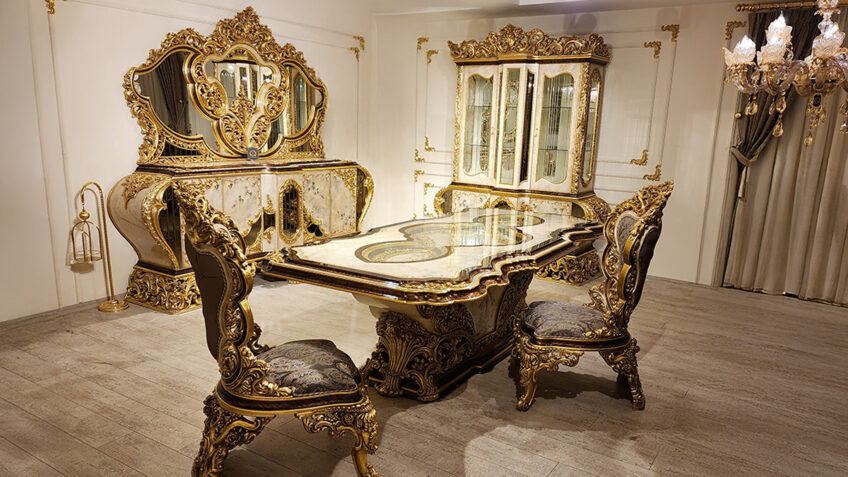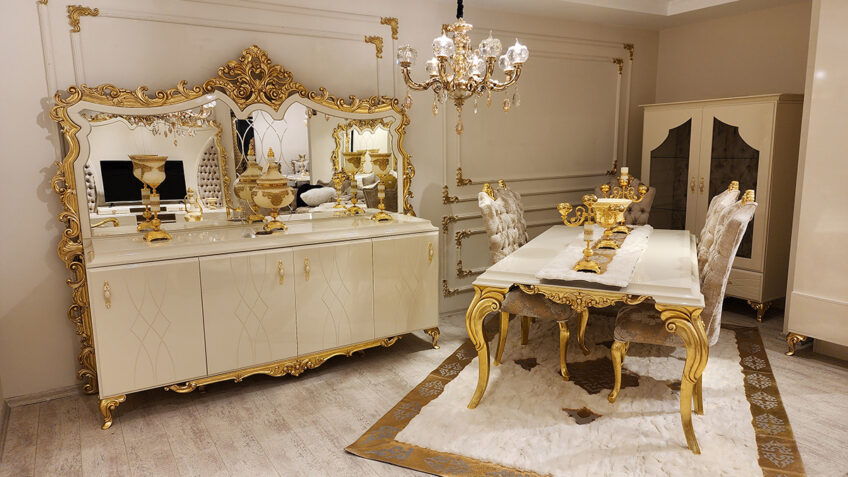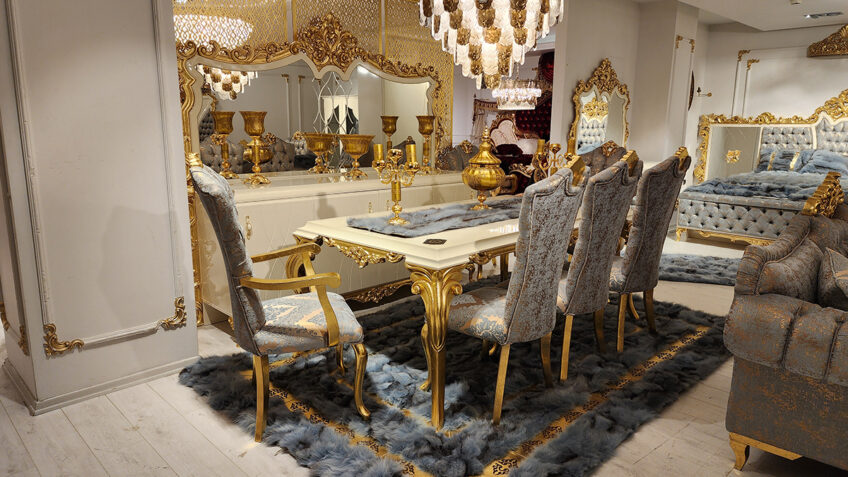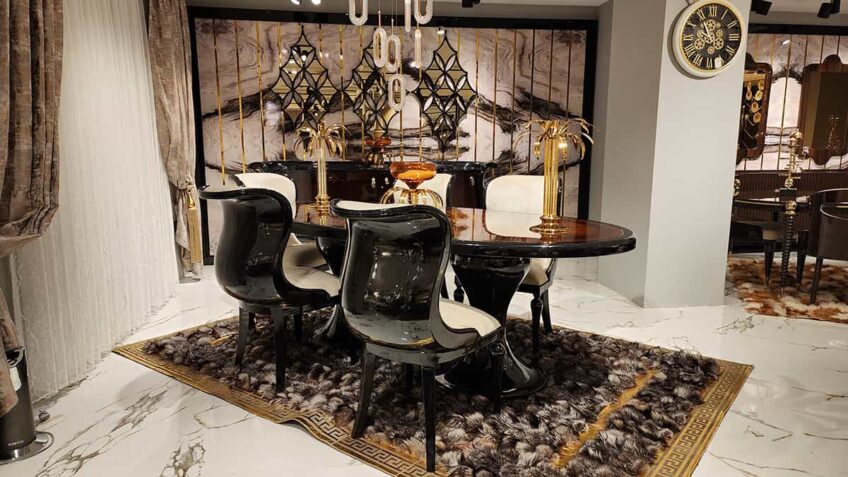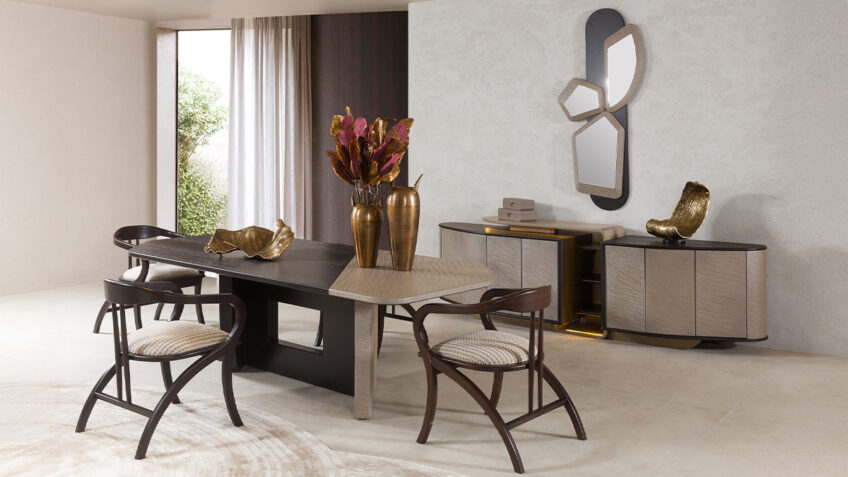Dining Room Set
A dining room set typically includes a table and a set of chairs designed for dining purposes. Here are the key components of a dining room set:
- Dining Table:
- The dining table is the central piece of the set. It comes in various shapes, including rectangular, round, square, and oval. The size of the table depends on the available space and the number of people you intend to accommodate. Common materials for dining tables include wood, glass, metal, and a combination of materials.
- Dining Chairs:
- Dining chairs are designed for seating around the dining table. They come in a variety of styles, including upholstered chairs, wooden chairs, metal chairs, and more. The number of chairs in a dining room set is typically determined by the size of the table, often ranging from four to eight chairs or more.
- Dining Bench (Optional):
- Some dining room sets may include a bench instead of or in addition to traditional chairs. A dining bench can add a casual and versatile seating option, particularly in farmhouse or rustic styles.
- Buffet or Sideboard (Optional):
- A buffet or sideboard is a common addition to a dining room set for storage and serving purposes. It provides extra space to store dishes, table linens, and other dining essentials. Some dining sets come with a matching buffet or sideboard, while others may offer it as a separate piece.
- China Cabinet or Hutch (Optional):
- For a more formal and traditional dining room, a china cabinet or hutch may be included in the set. This piece typically features glass doors for displaying china and glassware, with additional storage space in the lower cabinets or drawers.
When choosing a dining room set, consider the following factors:
- Size of the Room: Ensure that the size of the dining set fits comfortably within your dining room without overwhelming the space.
- Seating Capacity: Choose a dining set that accommodates the number of people you expect to seat regularly. This includes the number of chairs or benches and the size of the table.
- Style: Consider the style of the dining set and how well it complements the overall design aesthetic of your home. Common styles include traditional, modern, transitional, farmhouse, and more.
- Material and Finish: Pay attention to the materials used for the table and chairs, as well as the finish. Common materials include wood, metal, glass, and upholstery. Consider the durability and maintenance requirements of the chosen materials.
- Budget: Set a budget for your dining room set, taking into account the quality of materials, craftsmanship, and additional features. Dining room sets can range from budget-friendly options to high-end, designer sets.
Whether you're looking for a formal dining set for entertaining guests or a casual set for everyday use, there are numerous options available to suit various preferences and needs.
How to Choose the Best Dining Room Sets?
Choosing the best dining room set involves considering several factors to ensure it meets your functional needs, complements your home's style, and fits within your budget. Here are some tips to help you make an informed decision:
- Measure Your Space:
- Before you start shopping, measure your dining room to determine the available space. Consider the dimensions and layout of the room to ensure that the dining set fits comfortably, allowing enough space for movement and other furniture.
- Determine Seating Capacity:
- Decide on the number of people you want the dining set to accommodate regularly. This will help you choose a table size with the appropriate number of chairs or a mix of chairs and a bench.
- Consider the Shape of the Table:
- Dining tables come in various shapes, including rectangular, round, square, and oval. Choose a shape that not only fits your room but also complements your preferred dining style. Rectangular tables are common for more formal dining, while round tables can be cozy and facilitate conversation.
- Choose the Right Material:
- Consider the material of the dining table and chairs. Common materials include wood, glass, metal, and a combination of materials. Each material has its own aesthetic and maintenance requirements. Choose a material that aligns with your style preferences and lifestyle.
- Evaluate Style and Aesthetics:
- The style of the dining set should complement the overall aesthetic of your home. Whether you prefer modern, traditional, farmhouse, or a transitional style, select a dining set that enhances the visual appeal of your dining room.
- Check the Construction and Durability:
- Assess the construction and durability of the dining set. Look for solid and sturdy materials, quality craftsmanship, and reliable construction. Check customer reviews and ratings for insights into the durability and longevity of the set.
- Consider Additional Pieces:
- Decide if you want additional pieces such as a buffet, sideboard, china cabinet, or hutch. These pieces can enhance storage and serve as decorative elements. Ensure that the additional pieces, if any, match the style and finish of the main dining set.
- Test Comfort:
- If possible, test the comfort of the chairs by sitting on them. Pay attention to factors such as seat height, back support, and upholstery (if applicable). Comfort is crucial for an enjoyable dining experience.
- Set a Budget:
- Establish a budget for your dining room set. This will help you narrow down your options and prevent overspending. Keep in mind that a higher budget may afford you better quality and durability.
- Check for Customization Options:
- Some furniture retailers offer customization options, allowing you to choose specific finishes, materials, or upholstery. If customization is important to you, explore stores that provide this service.
- Research Brands and Retailers:
- Research reputable furniture brands and retailers. Read customer reviews, check for warranties, and ensure that the retailer has a good reputation for quality products and customer service.
- Visit Furniture Stores:
- If possible, visit furniture stores to see the dining sets in person. This allows you to assess the quality, finish, and overall appearance of the furniture before making a purchase.
How can I choose the right Dining Room Set style?
Choosing the right dining room set style involves considering your personal preferences, the existing decor of your home, and the atmosphere you want to create in your dining space. Here are some tips to help you select a dining room set style that suits your taste:
- Consider Overall Home Decor:
- Take into account the existing decor of your home. Your dining room set should complement the overall aesthetic of your living spaces. Consider factors such as color schemes, architectural features, and the style of furniture in other rooms.
- Define Your Personal Style:
- Think about your personal style preferences. Do you lean towards modern and minimalist designs, or do you prefer a more traditional and ornate look? Consider your favorite colors, patterns, and materials to help narrow down your choices.
- Assess Room Size and Layout:
- Consider the size and layout of your dining room. The available space can influence the choice of furniture style. In smaller spaces, sleek and compact modern designs may be more suitable, while larger rooms can accommodate a variety of styles.
- Choose a Style That Reflects Your Lifestyle:
- Your lifestyle and how you use the dining room can impact your style choice. If you entertain frequently, you might prefer a more formal and traditional setting. For casual family meals, a relaxed and comfortable style may be more appropriate.
- Explore Different Styles:
- Familiarize yourself with various dining room set styles. Common styles include:
- Modern/Contemporary: Clean lines, sleek surfaces, and minimalistic designs.
- Traditional: Classic and timeless, often featuring intricate details and rich materials.
- Transitional: Blending elements of both modern and traditional styles for a balanced look.
- Farmhouse/Rustic: Cozy and inviting, with natural materials and distressed finishes.
- Industrial: Utilizes raw materials such as metal and wood for an urban and edgy vibe.
- Mid-Century Modern: Retro-inspired designs from the mid-20th century, characterized by simplicity and functionality.
- Consider Material and Finish:
- Pay attention to the materials and finishes associated with different styles. For example, traditional styles often feature dark woods and ornate details, while modern styles may incorporate glass, metal, and light-colored woods.
- Mix and Match:
- Don't be afraid to mix and match styles for a more eclectic and personalized look. Mixing styles can add visual interest and create a unique dining space.
- Test for Comfort:
- Comfort is essential, especially when it comes to dining chairs. If possible, test the chairs to ensure they provide adequate support and comfort for extended periods.
- Consider Longevity:
- While trends can be appealing, think about the longevity of the style. Choosing a timeless or versatile style can ensure that your dining room set remains stylish for years to come.
- Check Online Inspiration and Showrooms:
- Explore online platforms, design magazines, and visit furniture showrooms to gather inspiration and see different styles in action. Visualizing the styles in real or staged settings can help you make a more informed decision.
- Consult with a Design Professional:
- If you're unsure about your style preferences or need guidance, consider consulting with a design professional. They can offer personalized advice based on your taste, budget, and the specific characteristics of your dining space.
Dining Room Set Prices
The prices of dining room sets can vary widely depending on several factors, including the materials used, the size of the set, the brand, and the overall design. Additionally, regional and local factors, as well as current market trends, can influence the cost of dining room sets. Here's a general breakdown of what you might expect in terms of prices for different types of dining room sets:
- Basic Dining Room Sets:
- Basic dining room sets, typically including a table and four chairs, often made from more affordable materials like particleboard, laminate, or basic wood.
- Mid-Range Dining Room Sets:
- Mid-range dining room sets, offering better quality and design, may include additional features like upholstered chairs, solid wood construction, or more intricate designs.
- High-End Dining Room Sets:
- High-end or designer dining room sets, featuring premium materials, craftsmanship, and unique designs, often include luxurious finishes, high-quality woods, and sophisticated detailing.
- Custom or Luxury Dining Room Sets:
- Custom or luxury dining room sets, which may be tailored to specific requirements and preferences, can have prices that vary widely. Customization options, high-end materials, and craftsmanship contribute to the higher cost, with some luxury sets reaching tens of thousands of dollars.
Factors influencing dining room set prices include:
- Material: The type of material used for the table and chairs, such as solid wood, veneers, glass, metal, or a combination, can significantly impact the cost.
- Design and Style: More intricate and detailed designs, as well as specific styles, may come with a higher price tag. For example, a handcrafted traditional dining set may cost more than a simple modern set.
- Brand and Manufacturer: Well-known and reputable furniture brands often charge higher prices for their products. Quality and brand reputation can be important considerations when assessing the cost.
- Size of the Set: The size of the dining room set, including the number of chairs and additional pieces like a buffet or china cabinet, can affect the overall price.
- Finish and Upholstery: The finish applied to the wood and the type of upholstery used for chairs can impact the cost. High-quality finishes and premium upholstery materials may contribute to a higher price.
- Customization: Sets that offer customization options, allowing you to choose specific finishes, materials, or features, may have higher price points.
- Sales and Promotions: Keep an eye out for sales, promotions, and discounts, especially during certain times of the year (such as holidays or clearance events), which can significantly reduce the cost.
